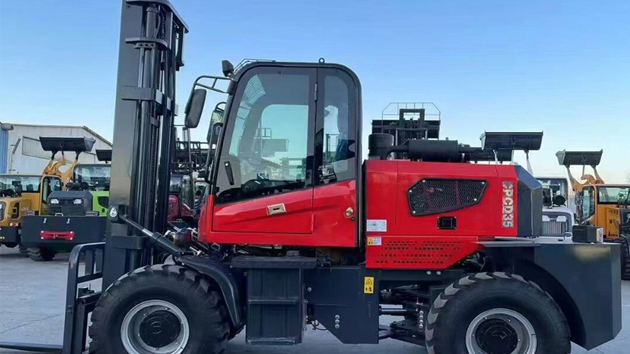Navigating the Depths: Understanding 4WD Forklift Water Wading Capabilities
2025-07-06 04:45:32
The 4WD forklift is a versatile piece of heavy machinery designed to tackle challenging terrains, including waterlogged or flooded areas. One of the most critical specifications for such environments is the water wading depth, which determines how deep the forklift can safely operate without risking mechanical failure. Typically, industrial-grade 4WD forklifts boast a water wading depth ranging from 300mm to 600mm, depending on the model and manufacturer. This capability ensures that operations can continue even in adverse weather conditions or flooded worksites.
Understanding the engineering behind 4WD forklift water resistance is essential for operators and fleet managers. The key components that enable high water wading depth include sealed electrical systems, waterproofed engine compartments, and specially designed air intake systems. For instance, leading manufacturers like Toyota and Hyster equip their 4WD models with elevated air intakes to prevent water ingress, allowing the forklift to operate in deeper water without stalling. These design features are critical for maintaining productivity in industries such as agriculture, construction, and logistics, where water exposure is common.
Operational safety is another crucial aspect when dealing with 4WD forklift water wading. Exceeding the recommended water wading depth can lead to hydraulic system contamination, electrical shorts, or even engine failure. OSHA guidelines emphasize the importance of adhering to manufacturer specifications and conducting pre-operation checks to ensure all seals and gaskets are intact. Additionally, operators should avoid sudden movements in water to prevent splashing, which could compromise sensitive components. Training programs often include modules on water operation to mitigate risks and extend the lifespan of the equipment.
Industry data reveals that demand for 4WD forklifts with high water wading depth has surged by 18% over the past five years, driven by increasing extreme weather events and expanding operations in flood-prone regions. A 2023 report by MarketsandMarkets highlighted that Asia-Pacific leads this growth, with construction and agriculture sectors investing heavily in water-resistant machinery. Manufacturers are responding by introducing advanced models with improved sealing technologies and real-time water depth sensors, further enhancing operational safety and efficiency.
In conclusion, the water wading depth of a 4WD forklift is a defining factor for its suitability in wet or flooded environments. By understanding the technical specifications, safety protocols, and industry trends, businesses can make informed decisions when selecting equipment. As climate change continues to impact worksite conditions, the importance of robust, water-resistant forklifts will only grow, making this a critical area of innovation for manufacturers and a key consideration for end-users.












